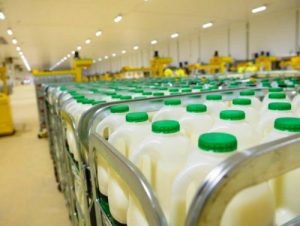Region’s recovery to be slowest in the UK

Yorkshire and the Humber is forecast to be the country’s region with the slowest economic recovery from the Covid-19 pandemic, a new report from EY has revealed.
The latest Regional Economic Forecast show that the region’s economy will be one of four not expected return to its 2019 levels by 2023 (when measured by Gross Value Added). In fact it shows that the region’s GVA is expected to see the equivalent of an average annual decrease of 0.31% between 2019 and 2023.
The report also shows that employment in the region will be lower by 2023 than it was last year – declining 0.45% a year over the same period.
The sectoral profile of both Yorkshire and the Humber and the Midlands, means they have seen the country’s largest GVA contractions in 2020. With both regions’ large manufacturing sectors significantly affected by this year’s events, when many factories were forced to close as a result of the first national lockdown.
The impact was further exacerbated in Yorkshire and the Humber as a result of its share of more resilient sectors being relatively low, thus limiting its ability to offset contraction in the wider economy.
Despite the overall contraction, some sectors look to be resilient, with human health & social work and information & communication forecast to be the most dynamic.

Suzanne Robinson, EY office managing partner for Yorkshire and the Humber
Suzanne Robinson, EY’s office managing partner for Yorkshire and the Humber, said: “Manufacturing, arts and leisure, and hospitality – crucial parts of the economies in towns, and the North – have been most affected during the pandemic or are likely to take longer to recover.
“These figures highlight the importance of ensuring this region continues to work on developing a balanced and mixed economy.”
However not all the findings were negative as it showed the cities of Sheffield, Leeds, York and Wakefield would continue to outpace the region’s benchmarks. Although only one of these cities will experience GVA growth to 2023 compared to 2019, according to the report.
Sheffield leads the region’s growth table with expected annual GVA growth of 0.16% between 2019 and 2023 despite a slight fall in employment of -0.06% per year. These changes will be led for GVA by the growth of the information & communication and human health & social work sectors, while the employment drop will be led by job losses within the administrative & support service sector.
Across many of the region’s smaller towns the picture is less positive. Barnsley, Harrogate, Doncaster and Rotherham are expected to see employment falling by around 0.5% a year.
However, it’s Hull with its manufacturing reliant economy – 27% of GVA compared to 10% of the UK as a whole – that is expected to experience the region’s greatest contraction from 2019 to 2023. It its predicted that its GVA will fall an average of 0.52% a year to 2023, with employment forecast to drop by 0.65% a year over the same period.
Ultimately Robson stated that the pandemic “has put the levelling up agenda in sharp focus”. She believes the focus on work/life balance which has been brought about by this crisis could see an increase in ‘virtual’ jobs which could therefore benefit places that have found it difficult to attract higher value-added sectors.
She concluded that: “A policy focus on supporting sectors, like manufacturing, which matter to both investors and towns would help, while the shift to ‘net zero’ can transform the economy.
“Crucially, the Government must avoid a top-down approach: boosting local capabilities and understanding local characteristics should be the starting point for working up to national policy frameworks.”








